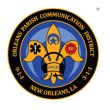More tips for avoiding the FCC’s wrath
A couple of weeks ago, UC Today featured a story that suggested a couple of ways that licensees could avoid Federal Communications Commission enforcement actions. The tips were provided during the recent Utilties Telecom Council’s conference in Long Beach, Calif., by Jeffrey Katz, UTC’s immediate past chairman and an enterprise IT consultant for Newark, N.J.–based PSEG Services Corp., and Donald Vasek, UTC’s director of spectrum services. Among the basics are becoming intimately familiar with the commission’s rules and regulations, and ensuring that each license application properly describes the system that will be deployed.
Katz said key questions that licensees must be sure to answer include the following:
- Does the radio transmitted that will be used by the licensee meet the FCC’s rules regarding frequencies and power levels?
- Have the necessary tower approvals been obtained?
One way to ensure the veracity of license applications is to work with a frequency coordinator. About 10 organizations nationwide do this work, including UTC and the Association of Public Safety Communications Officials (APCO). In fact, just about every radio system — notable exceptions being microwave systems and temporary base stations — requires frequency coordination, Katz said.
Such coordination is particularly critical in urban areas, where there can be dozens, or hundreds, of licensees operating in close proximity to each other, which creates strong potential for co-channel interference. A frequency coordinator will work with applicants to determine the best possible frequency given the environment or to recommend power levels that will let everyone coexist interference-free.
But frequency coordinators often are unable to find a specific frequency for a licensee. In such cases, licensees may be forced to share frequencies. “There are shared frequencies being used every five or six blocks in New York City,” Vasek said. For example, one licensee, perhaps a delivery service, would use the frequency during the daytime hours, while a security firm will use the same airwaves in the evening and overnight hours.
Katz provided a cautionary note regarding frequency coordinators. “Google ‘defective coordination’ and avoid those who appear in the search results,” he advised. “They’re the ‘Earl Scheibs’ of frequency coordination,” a reference to the cut-rate automobile-painting company that ceased nationwide operation a couple of years ago.
“They rubber stamp things and don’t do their homework,” Katz said. “I’ve seen them coordinate the same frequencies 100 yards apart.”
UTC provides frequency and license monitoring services on a fee basis. The former monitors call signs on a weekly basis; when a problem arises, the licensee is notified and UTC works with other applicable frequency coordinators to resolve the problem. For example, let’s say that a construction company begins work on a project that’s only a few miles away from a utility’s radio site. The close proximity of the construction company’s radios might create a temporary interference problem. That’s something the utility will want to know. The latter service notifies entities when their license applications need to be re-filed and alerts licensees when the FCC issues rules that might affect their licenses.
One mistake that trips up many licensees concerns who signs the license application. All too often, the outside contractor signs the application, which is a big no-no, Katz said. “They have to be signed by an employee of the licensee,” he said. “This is a big bugaboo — we come across this all the time when we do license audits.”
Speaking of outside contractors, Katz said that utilities and other licensees often encounter trouble when the contractor brings its own radios to the job site, because using such radios often changes the RF environment. It is the licensee’s responsibility to ensure that the contractor’s radios don’t cause harmful interference to other systems that might be operating in the area — as well as the licensee’s own systems — according to Katz. In the case of the former, an enforcement action might be in the licensee’s future. The simpler and safer approach is to supply contractor personnel with radios owned by the utility. “You can give radios to contractors, because the FCC considers them to be part of your organization,” he said.
Yet another good idea is to become familiar with the FCC’s Universal Licensing System (ULS), Katz said. It’s an even better idea to actually use it, he added.
“There’s no sense in maintaining your own database, because the ULS is the system of record — the law states that if it doesn’t exist in the ULS, then it doesn’t exist,” he said. “Plus it does all of the work for you.”
A portal on the FCC’s website dubbed “License View,” provides visibility into each license an entity holds and the status of the license, which particularly is useful for reminding licenses when their licenses need to be renewed, he said.
Next week: Still more tips.
What do you think? Tell us in the comment box below.

















